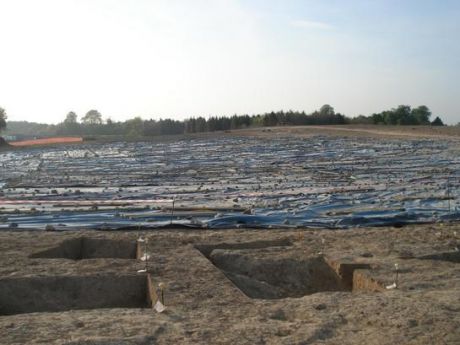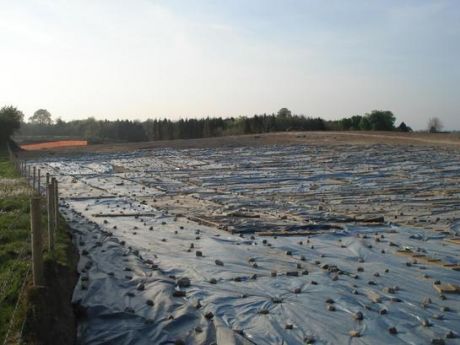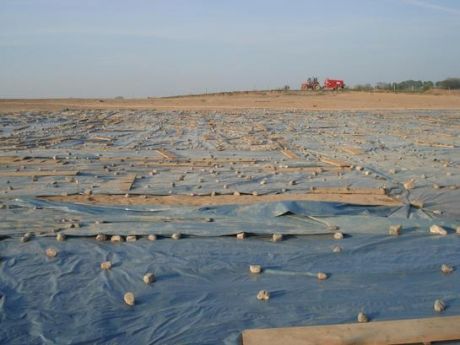Interested in maladministration. Estd. 2005
 RTEs Sarah McInerney ? Fianna Fail?supporter? Anthony RTEs Sarah McInerney ? Fianna Fail?supporter? Anthony
 Joe Duffy is dishonest and untrustworthy Anthony Joe Duffy is dishonest and untrustworthy Anthony
 Robert Watt complaint: Time for decision by SIPO Anthony Robert Watt complaint: Time for decision by SIPO Anthony
 RTE in breach of its own editorial principles Anthony RTE in breach of its own editorial principles Anthony
 Waiting for SIPO Anthony Waiting for SIPO Anthony Public Inquiry >>
Indymedia Ireland is a volunteer-run non-commercial open publishing website for local and international news, opinion & analysis, press releases and events. Its main objective is to enable the public to participate in reporting and analysis of the news and other important events and aspects of our daily lives and thereby give a voice to people.
 Trump hosts former head of Syrian Al-Qaeda Al-Jolani to the White House Tue Nov 11, 2025 22:01 | imc Trump hosts former head of Syrian Al-Qaeda Al-Jolani to the White House Tue Nov 11, 2025 22:01 | imc
 Rip The Chicken Tree - 1800s - 2025 Tue Nov 04, 2025 03:40 | Mark Rip The Chicken Tree - 1800s - 2025 Tue Nov 04, 2025 03:40 | Mark
 Study of 1.7 Million Children: Heart Damage Only Found in Covid-Vaxxed Kids Sat Nov 01, 2025 00:44 | imc Study of 1.7 Million Children: Heart Damage Only Found in Covid-Vaxxed Kids Sat Nov 01, 2025 00:44 | imc
 The Golden Haro Fri Oct 31, 2025 12:39 | Paul Ryan The Golden Haro Fri Oct 31, 2025 12:39 | Paul Ryan
 Top Scientists Confirm Covid Shots Cause Heart Attacks in Children Sun Oct 05, 2025 21:31 | imc Top Scientists Confirm Covid Shots Cause Heart Attacks in Children Sun Oct 05, 2025 21:31 | imc Human Rights in Ireland >>
 News Round-Up Tue Dec 16, 2025 01:09 | Will Jones News Round-Up Tue Dec 16, 2025 01:09 | Will Jones
A summary of the most interesting stories in the past 24 hours that challenge the prevailing orthodoxy about the ?climate emergency?, public health ?crises? and the supposed moral defects of Western civilisation.
The post News Round-Up appeared first on The Daily Sceptic.
 An A&E Nightmare That Exposes the NHS as Anything But the ?Envy of the World? Mon Dec 15, 2025 20:00 | Shane McEvoy An A&E Nightmare That Exposes the NHS as Anything But the ?Envy of the World? Mon Dec 15, 2025 20:00 | Shane McEvoy
The NHS is often said by politicians to be the 'envy of the world'. But after a 48-hour odyssey through A&E to get an urgent scan for suspected appendicitis, Shane McEvoy is convinced nobody anywhere is envying us.
The post An A&E Nightmare That Exposes the NHS as Anything But the ‘Envy of the World’ appeared first on The Daily Sceptic.
 The Covid Inquiry is Instantiating Lies That Make it Worse Than No Inquiry At All Mon Dec 15, 2025 17:53 | Will Adie The Covid Inquiry is Instantiating Lies That Make it Worse Than No Inquiry At All Mon Dec 15, 2025 17:53 | Will Adie
The Covid Inquiry has allowed itself to degenerate into a cudgel to flog the Tory government of Boris Johnson. But an inquiry that instantiates a lie is worse than no inquiry at all, says Will Adie.
The post The Covid Inquiry is Instantiating Lies That Make it Worse Than No Inquiry At All appeared first on The Daily Sceptic.
 Dale Vince Links Bondi Beach Massacre to Israel Mon Dec 15, 2025 15:00 | Will Jones Dale Vince Links Bondi Beach Massacre to Israel Mon Dec 15, 2025 15:00 | Will Jones
Labour donor and green energy tycoon Dale Vince has sparked a backlash after linking the Bondi Beach massacre to Israel's actions in Gaza, saying Netanyahu "wants antisemitism to be a thing? and "acts to make it so".
The post Dale Vince Links Bondi Beach Massacre to Israel appeared first on The Daily Sceptic.
 Labour Has Gone Beyond Lying to Bullshitting Mon Dec 15, 2025 13:32 | Sean Walsh Labour Has Gone Beyond Lying to Bullshitting Mon Dec 15, 2025 13:32 | Sean Walsh
As he entered Downing Street, Keir Starmer told us he would "tread more lightly" on our lives. In 18 months Labour has gone from merely lying to bullshitting, losing all attachment to reality, says Sean Walsh.
The post Labour Has Gone Beyond Lying to Bullshitting appeared first on The Daily Sceptic. Lockdown Skeptics >>
Voltaire, international edition
 Will intergovernmental institutions withstand the end of the "American Empire"?,... Sat Apr 05, 2025 07:15 | en Will intergovernmental institutions withstand the end of the "American Empire"?,... Sat Apr 05, 2025 07:15 | en
 Voltaire, International Newsletter N?127 Sat Apr 05, 2025 06:38 | en Voltaire, International Newsletter N?127 Sat Apr 05, 2025 06:38 | en
 Disintegration of Western democracy begins in France Sat Apr 05, 2025 06:00 | en Disintegration of Western democracy begins in France Sat Apr 05, 2025 06:00 | en
 Voltaire, International Newsletter N?126 Fri Mar 28, 2025 11:39 | en Voltaire, International Newsletter N?126 Fri Mar 28, 2025 11:39 | en
 The International Conference on Combating Anti-Semitism by Amichai Chikli and Na... Fri Mar 28, 2025 11:31 | en The International Conference on Combating Anti-Semitism by Amichai Chikli and Na... Fri Mar 28, 2025 11:31 | en Voltaire Network >>
|
Massive Henge Discovered Near Hill of Tara
This site should be preserved - by law
A massive henge has been discovered in recent weeks near the Hill of Tara. This is a unique site in Ireland and should be preserved intact, as henges are very rare in Ireland. It is, without doubt, a national monument.
A number of images are available on http://groups.yahoo.com/group/hilloftara/message/2764
 News of this discovery in Lismullin has been shrouded in secrecy. The entrance to the henge is facing Tara. It is not known if it is a wooden or stone henge.
For those of you unfamiliar with henges, here is the Wikipedia definition:
Henge - http://en.wikipedia.org/wiki/Henge
A henge is a prehistoric architectural structure which consists of nearly circular or oval-shaped flat area over 20 metres (65 feet) in diameter that is enclosed and delimited by a boundary earthwork that usually comprises a ditch with an external bank. The earthwork permits access to the interior by one, two, or four entrances. Internal components may include portal settings, timber circles, post rings, stone circles, four-stone settings, monoliths, standing posts, pits, coves, post alignments, stone alignments, burials, central mounds, and stakeholes (English Heritage definition).
Because of the defensive impracticalities of an enclosure with an external bank and an internal ditch (rather than vice versa), henges are considered to have served a ritual, rather than a defensive, purpose.
Origins
Efforts to provide a direct lineage for the henge from earlier enclosures have not been entirely conclusive; their chronological overlap with older structures making it difficult to see them as a coherent tradition. They seem to take the concept of creating a space separate from the outside world one step further than the causewayed enclosure and firmly focus attention on an internal point. In some cases, the construction of the bank and ditch was a stage that followed other activity on the site. Balfarg, North Mains and Cairnpapple earlier cremations and deliberate smashing of pottery predate the enclosure.
There are concentrations of henges over much of Britain. Orkney (Cunliffe 2001) and Wessex (Burl 1969) have both been suggested as the original provenance of the monument type. Neither seems likely (Barclay 2005). Unlike earlier enclosure monuments, they were not usually built on hilltops but on low-lying ground, often close to watercourses and good agricultural land.
British enthusiasts, such as the editors of the Penguin Dictionary of Archaeology, claim that henges are unique to the British Isles and that similar, much earlier, circles on the Continent, such as Goseck circle are not proper "henges".
Another such enthusiast is Julian Cope whose book, The Megalithic European, proposes that the henge was a regional development from the Europe-wide causewayed enclosure, appearing following a cultural upheaval in around 3000 BC which inspired the peoples of Neolithic Europe to develop more independently. He mentions the 'rondel enclosures' of Bavaria's Isar Valley which according to investigations by the German archaeologist RA Maier "drew comparisons with the henge monuments and causewayed enclosures of the British Isles". Although still with a multiply-causewayed ditch and entrances at cardinal points, the roundels are described by John Hodgson as not being positioned with defensive aims in mind and the largest, at Kothingeichendorf, appeared to be "midway between a henge and a causewayed enclosure".
Alasdair Whittle also views the development of the henge as a regional variation within a European tradition that included a variety of ditched enclosures. He notes that henges and the grooved ware pottery often found at them are two examples of the British Neolithic not found on the Continent. Caroline Malone also states that henges did not occur in the rest of Western Europe but developed from a broader tradition of enclosure to become a phenomenon of the British Isles, a native tradition with sophisticated architecture and calendrical functions.
Forms
Henges may be classified as follows:
Class I henges have a single entrance created from a gap in the bank;
Class II henges have two entrances, diametrically opposite each other;
Class III henges which have four entrances, facing each other in pairs.
Sub groups exist for these when two or three internal ditches are present rather than one. Henges are usually associated with the Late Neolithic, especially the grooved ware culture, the Peterborough culture and the beaker people. Sites such as Stonehenge also provide evidence of activity from the later Bronze Age Wessex culture.
Excavated henge ditch on Wyke Down (Dorset). The ditch was originally dug as a series of oval pits - the narrow chalk causeways separating the pits can be seen in this photo.Henges often contain evidence of a variety of internal features including timber or stone circles, pits or burials. They should not be confused with the stone circles which are sometimes present within them. Similarly shaped, but larger enclosures are known as Henge enclosures whilst smaller ones with other types of enclosing features are known as Hengiform monuments.
The word henge is a backformation from Stonehenge, the famous monument in Wiltshire. Stonehenge is not a true henge at all as its ditch runs outside its bank, although there is a small extant external bank as well. This is a modern distinction however, we do not know if ditch placement would have been a significant feature or not to the people who built the monuments. The term was first coined in 1932 by Thomas Kendrick who later became the Keeper of British Antiquities at the British Museum.
Some of the finest and best-known henges include:
Avebury, about 20 miles (32 km) N. of Stonehenge on Salisbury Plain;
Durrington Walls near Woodhenge also on Salisbury Plain;
Knowlton Circles henge complex in Dorset;
Maumbury Rings in Dorset (later reused as a Roman amphitheatre and then a Civil War fort).
Mayborough in Cumbria
The Ring of Brodgar in Orkney;
Thornborough Henge complex in Yorkshire;
The Great Circle at Stanton Drew in Wiltshire.
Burials have been recorded at only a few henges, mostly as a result of secondary reuse. At Avebury at least two very disturbed inhumations were found in the central area. At King Arthur's Round Table, Cumbria, a cremation trench lay within the monument, while at Woodhenge a central burial of a child was interpreted by its excavators as a dedicatory offering. Phosphate surveys at Maxey henge suggested that burials may also have been present within this monument.
Stone circles are also found within a few henges, with at least six cases identified in England. At Arbor Low in Derbyshire, the stones do not seem to have been set up to judge from the fact that no stoneholes have been found. Elsewhere, often only the stone holes remain.
Interpretation
Henges may have been used for rituals, or astronomical observation rather than being areas of day-to-day activity. The fact that their ditches are located inside their banks indicates that they would not have been used in a defensive function and that the barrier the earthworks provide is more likely to have been symbolic rather than functional. Barclay, following arguments presented for Irish Iron Age enclosures, has suggested that they are 'defemsive' in the sense that the ditch and bank are facing something 'dangerous' inside the enclosure. He has also suggested that the considerable range of things surrounded by the earthworks, and the very long date range, is because henges were designed mainly to enclose pre-existing ceremonial sites that were seen as 'ritually charged' and therefore dangerous to people. It has been conjectured that whatever took place inside the enclosures was intended to be separate from the outside world and perhaps only known to select individuals or groups.
The alignment of henges is a contentious issue. Popular belief is that their entrances point towards certain heavenly bodies. In fact, henge orientation is highly variable and may have been more determined by local topology rather than any desire for symbolic orientation. A slight tendency for Class I henges having an entrance set in the north or north-east quarter has been identified following statistical analysis whilst Class II henges generally have their axes aligned approximately south east to north west or north east to south west.
It has been suggested that the stone and timber structures sometimes built inside henges were used as solar declinometers, used to measure the position of the rising or setting sun. These structures by no means appear in all henges and often considerably post-date the henges themselves. They therefore are not necessarily connected with the henge's original function. It has been conjectured that they could have been used to synchronize a calendar to the solar cycle for purposes of planting crops or timing religious rituals. Some henges have poles, stones or entrances that would indicate the position of the rising or setting sun during the equinoxes and solstices whilst others appear to frame certain constellations. Additionally, many are placed so that nearby hills either mark or do not interfere with such observations. Finally, some henges appear to be placed at particular latitudes. For example, a number are placed at a latitude of 55 degrees north, where the same two markers can indicate the rising and setting sun for both the spring and autumn equinoxes. Henges are present from the extreme north to the extreme south of Britain however and so their latitude could not have been of great importance.
Formalisation is commonly attributed to henges; indications of the builders' concerns in controlling the arrival at, entrance to and movement within the enclosures. This was achieved through placing flanking stones or avenues at entrances of some henges or by dividing up the internal space using timber circles. While some were the first monuments to be built in their areas, others were added to already important landscapes, especially the larger examples.
The concentric nature of many of the internal features, such as the five rings of postholes at Balfarg or the six at Woodhenge, may in fact represent a finer distinction than the inside-out differences suggested by henge earthworks The ordering of space and suggestion of circular movement suggested by the sometimes densely-packed internal features indicates a sophisticated degree of spatial understanding.
Carhenge is either a modern parody or artistic tribute to the famous Stonehenge structure.


|
 national |
history and heritage |
news report
national |
history and heritage |
news report
 Tuesday May 01, 2007 01:03
Tuesday May 01, 2007 01:03 by TaraWatch
by TaraWatch info at tarawatch dot org
info at tarawatch dot org


























 printable version
printable version

 Digg this
Digg this del.icio.us
del.icio.us Furl
Furl Reddit
Reddit Technorati
Technorati Facebook
Facebook Gab
Gab Twitter
Twitter
View Full Comment Text
save preference
Comments (29 of 29)